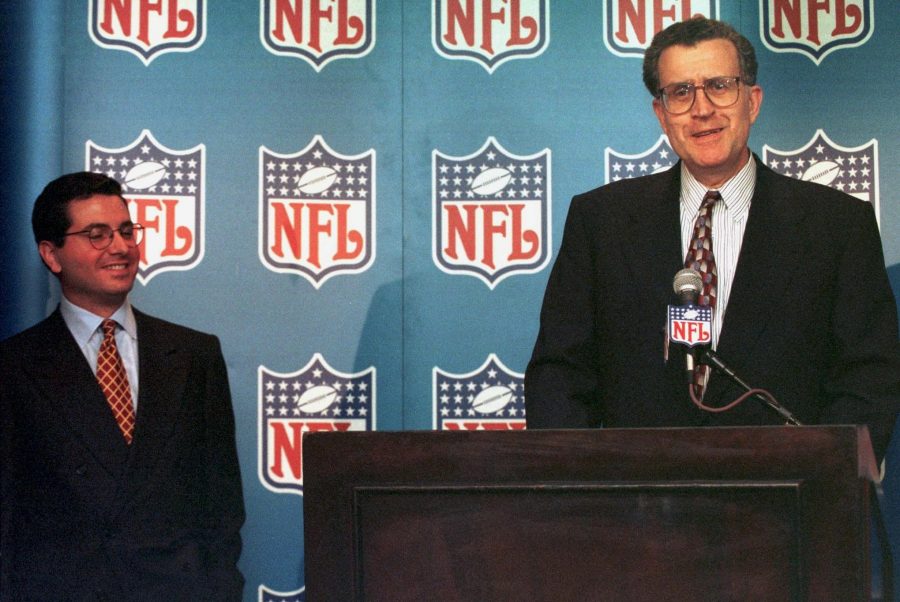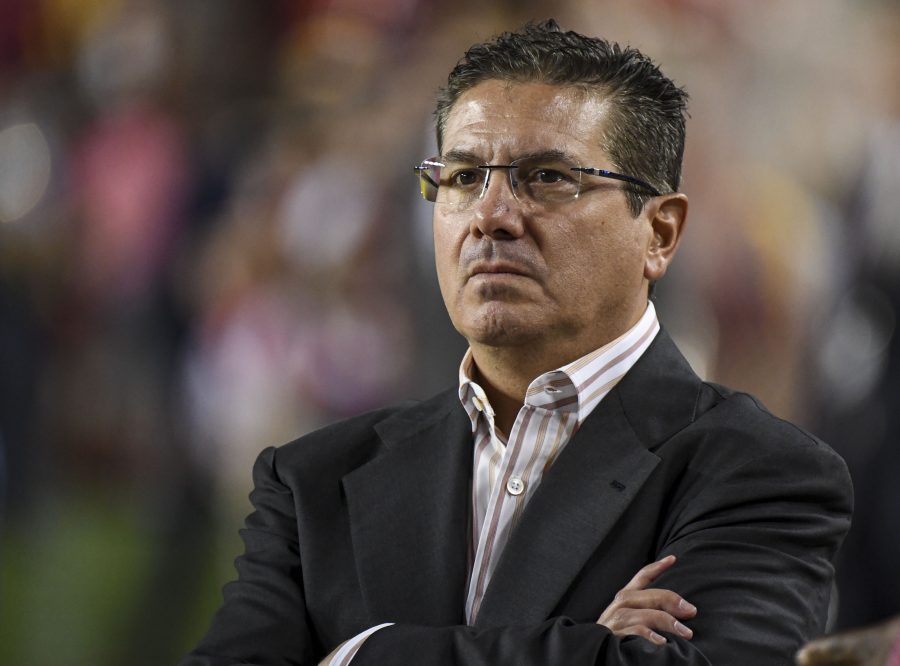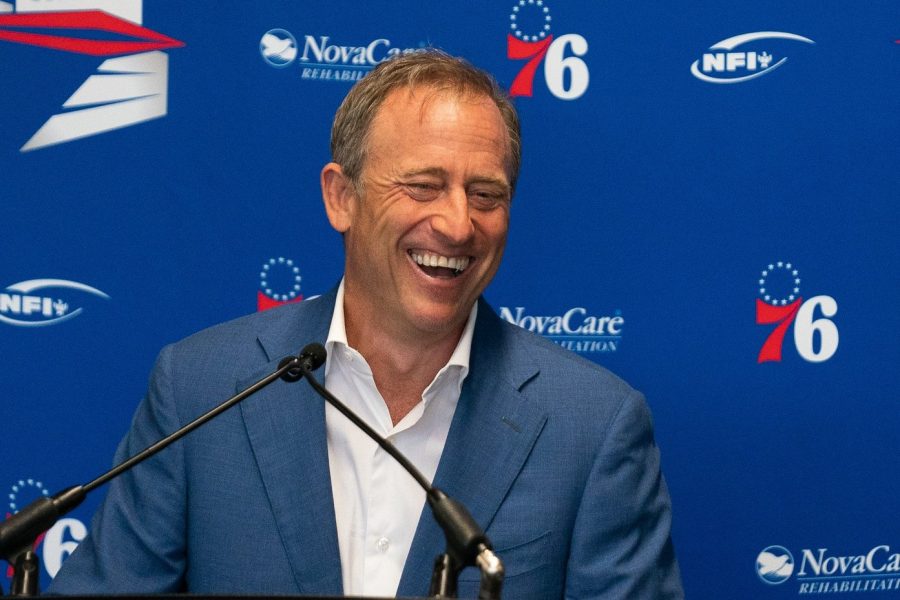Dan Snyder: A Football Obituary
After nearly 25 years at the helm of an NFL team, Dan Snyder was finally ousted from Washington last week. A lack of success on the field and an abundance of controversy off it, Snyder leaves with a healthy bank account but a reputation in tatters.
There are numerous victims of the Dan Snyder era in the nation’s capitol, not least the fans of this once-heralded franchise. But whilst the wounds are still raw, they are soothed by some real optimism of a brighter future. Joshua Edwards looks at the rise and fall of Washington’s late Commander, and what’s next in D.C.
Ding Dong! The Witch Is Dead

Daniel Snyder’s reputation, in 1999, did not precede him. Before becoming owner of the then Washington Redskins, he was as far from a household name as one might imagine. Three years earlier he’d become the youngest ever CEO of a New York Stock Exchange listed company in history, but in the most powerful city in the world he wasn’t even an afterthought. Perhaps this was part of the problem all along. Snyder’s dream was always, apparently, to own the team for which he claimed ardent support (despite not owning season tickets for a great deal of his supposed fandom). But any objective analysis of his ownership would highlight a litany of errors and an air of arrogance which points towards a serious lack of care and attention.
Originally part of a group of investors who were declined the opportunity to buy the team from Jack Kent Cooke, Snyder took the initiative, striking out on his own and fronting a bid which totalled $800m and became the largest sporting transaction in history at the time when approved. Just eight years removed from the team’s third Super Bowl win, it was a momentous occasion in D.C. It also heralded perhaps the most systematic and mindboggling ruining of a professional sports team in history.
Destroying The Redskins
They could teach classes at Wharton on Snyder’s tenure as a case study – ‘How to ruin a once prestigious, winning brand’. For younger fans, it is worth a brief foray back in time to when the Washington franchise was the pinnacle. In a town divided along political lines, the Redskins were the great unifier. Socio-economic, racial, and political divides were bridged by the team, which also happened to be extremely competitive. In a thirteen-season span between 1980 and 1992, the team had a 116-52 regular season record, winning 16 playoff games and three Super Bowls. In stark contrast to recent times, RFK Stadium was one of the hardest tickets in the country to get, and the season ticket waiting list was lengthy (years later, Snyder would claim the wait list was still active, but this was easily debunked).
The paradox of Snyder’s ownership over twenty plus years was the tension between disastrous micromanagement and aloof disinterest. Among the super-yacht sailing, billionaire elite, he relished the kudos of the exclusivity – just one of 32 people in the world to own an NFL franchise. But he was also a recluse, eschewing media appearances and giving team executives carte blanche to run operations. This was likely tactical too – the further he (seemingly) distanced himself from the day to day, the less culpability (in his mind at least) to scandal.
That said, even when he was distant, he wasn’t. Head coaching decisions were head scratching. Back in 2002, Snyder fired Marty Schottenheimer after just one season, hiring CFB legend Steve Spurrier to his first (and only) NFL head coaching job to replace him. Snyder was enamoured with the idea that Spurrier, who he gave a record five-year, $25 million contract, could translate his success from college to the pros. Spurrier resigned after two years and a 12-12 record.
Snyder was arrogant enough to make football decisions unilaterally, from signing Jeff George to a 4 year, $18m deal when Brad Johnson was more than serviceable, to trading for and extending Donovan McNabb. A hint for GMs everywhere – if your divisional rival is willing to shift their starting QB to you, perhaps take a step back and ask why.
In recent years Snyder ‘stepped back’ from the day-to-day operations. But then he got bored. In 2019 he drafted his son’s high school buddy Dwayne Haskins 15th overall, in spite of the protestations from football executives, coaches and scouts that the QB was more of a 3rd round project. Time and again, throughout the reign of terror, he set the team back on the field by overruling professionals who had committed their whole lives to understanding the nuances of the game.
As the brand declined, and fans stayed away, Snyder’s options for improvement diminished over the years. Free agents came for a payday rather than a second chance at glory. Coaches stayed away; when Jim Mora and Steve Spagnuolo turned the job down in 2008, Snyder promoted recently hired offensive co-ordinator Jim Zorn to Head Coach. That went well:
2009: One of the worst calls ever. Sometimes you wonder if a coach is trying to get fired. In #NYGiants 45-12 win over Redskins, Jim Zorn tried the swinging gate not once, but twice in a row & @BVJOfficial got a pick. "What in the wide world" That's @GrahamGano too #TogetherBlue pic.twitter.com/LKlcQ9q1jt
— BigBlueVCR (@BigBlueVCR) June 21, 2022
By 2023, Snyder had become the most hated man in Washington. Presidents and generals had support from different quarters, but the city’s disdain for Snyder was near unanimous. His lack of self-awareness was as galling as it was apparent. It was always someone else’s fault – Vinny Cerrato, Bruce Allen, Scott McCloughan – and never his. Washington fans stayed away in their droves as the team developed an aversion to winning games and the stadium fell apart around them, but Snyder was never self-aware enough to realise it was his mistakes which precipitated it all. He was reportedly sincerely shocked when a survey of fans had his and Bruce Allen’s approval ratings at <5%.
Scandal

The stories of Snyder’s management style abound, from the ridiculous (spilling soured milk in Ted Lerner’s suite after a business deal didn’t go to his liking) to the downright nasty and litigious (Snyder consistently berated a male employee for having once been a cheerleader). He once sued elderly season ticket holders who could no longer afford their payments, including a 72-year-old lady whose business had taken a turn during the credit crunch – Snyder bankrupted her. At one point, to save money, he bought dead-stock peanuts from the defunct Independence Air and resold them at Fed-Ex Field – they were 9-12 months old. There are more stories, of course, not committed as confidently to print. I will not relitigate these here, as I like the editing team too much to cause them any headaches.
The worst of Snyder’s behaviour, however, was that which damaged employees, typically women. Much has been written about the culture in Ashburn, and far more eloquently than I have attempted here. It would be remiss not to mention the reporting by the Washington Post on Snyder’s laundry list of misgivings and improprieties in this arena. At worst these were perpetuated by him, at best facilitated and wilfully ignored by him.
This was extensive investigative journalism which, one could confidently argue, led to the sale of the team. Once upon a time Snyder was confident enough to proclaim that he would never change the name from Redskins, “You can put that in caps!”. A few years later he had succumbed to sponsorship pressure, and just two years after that, he was driven to sell by investigation after investigation into his ownership.
The combination of a lack of success and an abundance of scandal is well documented. The Washington Post’s Nicki Jhabvala crunched the numbers nicely:
I did the math ... pic.twitter.com/iO21GFw8mz
— Nicki Jhabvala (@NickiJhabvala) July 20, 2023
Sale
Last week the nightmare ended. The sale of the Washington Commanders from Snyder to a group of investors led by businessman Josh Harris became official. The ownership group is large and diverse, and the sale process was not without difficulty. One league source was quoted as suggesting that “were it not such a concerted effort to oust Snyder, this wouldn’t get approved”.
$6.05bn is a lot of money, and a large group was required to get it over the line, ranging from NBA hall of famer Magic Johnson to local businessman Mitchell Rales, who was at SBXXVI in Minneapolis, when Washington beat the Bills 37-24. It was the first Super Bowl Rales attended, and, roughly 31 years later, he returned to the area to officially become an owner of the team. “It’s a full circle,'” he said.
For his part, Harris spoke eloquently about the change the group needs to initiative:
“We’re focused on changing the culture. It’s about creating a management team that doesn’t look the same. It’s about zero tolerance on ethically challenged behaviour. When you own a sports team in a city, everyone looks at what you do.
“Everyone who works at the team … they’re a reflection on [the fans]. It’s all about culture. We’re very intentional about culture.”
Snyder was embroiled in controversy til the very end. On the day of the sale the league fined him (personally, rather than the team as it had done in the past) $60m “in resolution of Ms. White’s findings and all outstanding matters”. Not much of a dent in $6.05bn.
What's Next?

A cloud has been lifted off the field, but even the most ardent of Sam Howell fans would admit the long-shot nature of his chances as a franchise quarterback. There is serious talent on the roster (McLaurin, Payne, Allen, Curl) but the depth is lacking. Patience is the order of the day for the fanbase, but those in-situ would do well not to sit comfortably.
Jason Wright, team president and ‘mastermind’ behind the unwieldy rebrand to Commanders, won’t have welcomed comments from minority investor Magic Johnson: “everything is on the table, the name of the team will come up eventually”. Ron Rivera, who has a 22-27-1 record with Washington, likely needs a convincing winning season to retain employment, especially with Eric Bieniemy now on the staff and itching for a first shot at the top job. Even that might not be enough.
For now though, Washington fans can rejoice. There’ll be a hangover, and a lot of time to heal, but there is finally a future worth savouring.

JOSHUA EDWARDS
NFC EAST & COLLEGE FOOTBALL ANALYST
JOSH IS AN NFC EAST SPECIALIST AND LONG SUFFERING COMMANDERS FAN BASED IN LONDON. CHECK OUT HIS ARTICLES HERE AND FOLLOW HIM @JOSHWA_1990 ON TWITTER FOR SOME WRY CYNICISM
